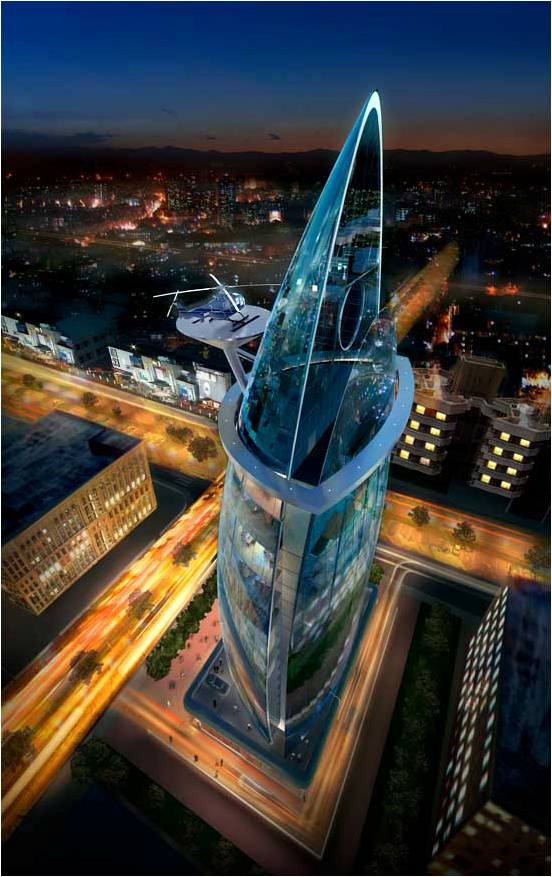 It is important not to get misled by just the advertised price, but understand all the involved fixed and recurring costs. As per sec 4 of the Maharashtra Ownership Flat Act (download MOFA), Builder cannot take more than 20% of the total sale amount, before signing of the agreement. Also, on completion it is mandatory for the builder to get OC (Occupation Certificate), form a society, do conveyance for the society.
It is important not to get misled by just the advertised price, but understand all the involved fixed and recurring costs. As per sec 4 of the Maharashtra Ownership Flat Act (download MOFA), Builder cannot take more than 20% of the total sale amount, before signing of the agreement. Also, on completion it is mandatory for the builder to get OC (Occupation Certificate), form a society, do conveyance for the society.
Documents that need to be checked before signing the agreement with the builder:
- Copy of registered agreement between the owner and the builder
- City survey plan
- Latest Property card, which gives the evidence of the ownership of the property. You can find details of your property card online, for Mumbai City and for Mumbai suburbs. You will need to input your CTS number.
- 7/12 extract (for rural properties), 6/12 extract, Kami Jasta Patra (KJP) and other relevant mutation entries
- Layout plan, as approved BMC
- Architects certificate
- Title search for the past 30 years
- Certificate under ‘Urban Land Ceiling Act, 1976’ and NA order
- IOD (Intimation of Disapproval) and CC (Commencement Certificate), which is a must before development can start.
- If property is already completed, then the OC (Occupation Certificate) which ensures compliance with the building codes and the BCC (Building Completion Certificate) which ensures compliance with the municipal corporation regulations.
- Power of Attorney with the Developer to transfer the undivided share of land to each flat owner and the entire plot to the society on completion
- Payment of stamp duty and registration
- Draft conveyance deed (to hand over property to society on completion)
- Declarations, Undertakings, Legal notices and public notices, for work to start
- Compliance under MOFA (Maharashtra Ownership Flats Act)
- Stays and NOC’s from various statutory agencies
- FSI and TDR related approvals
- Legal framework for demolition of old structures and vacating of premises
- Bank guarantees
 As per RERA (Real Estate Regulation and Development) Act, the buyer has the right to obtain information about the sanctioned plans, layout plans, stage-wise completion schedules and in the worst case apply for a refund for non-completion of the project. The buyer too has to make timely payments as per the agreement.
As per RERA (Real Estate Regulation and Development) Act, the buyer has the right to obtain information about the sanctioned plans, layout plans, stage-wise completion schedules and in the worst case apply for a refund for non-completion of the project. The buyer too has to make timely payments as per the agreement.
If the flat is already constructed and ready, then apart from the above:
- Flat must be constructed as per approved plan
- The compulsory BCC (Building Completion Certificate) has been obtained
- To confirm if building has clear and approved road access
- Utilities are available for use
NOC from developer
In a major relief to flat buyers, the state government’s housing department has said that there is no need for a no-objection certificate from the developer for sale or transfer of flat (resale) in a fully constructed building, under Maharashtra Ownership of Flats Act (MOFA). The department has also written to the Inspector general of registration, to ensure that officials in the registration department register sale documents without insisting on the NOC from developers.
Stamp duty basics
Either the buyer or the seller can pay the stamp duty. If nothing is mentioned in the agreement, then as per Section 30 of the Bombay Stamp Duty Act, the purchaser has to pay the stamp duty.
Please download the Bombay Stamp Act, 1958. For stamp duty ready-reckoner please go online at the government site and then click on ‘Online facilities’ and ‘eASR rates’.
Stamp duty on Gift deeds
Under article 34 of schedule 1 of the Act, the stamp duty payable on the gift deed under which property is being gifted to a family member, would be 2% of the market value of the property. As per Registration Act, 1908, since the gift deed would deal with immovable property, the same would need to be registered with the applicable Sub-registrar (the registration charges payable would be 1% of the market value of the property, subject to a cap of Rs 30,000). Gift deed is valid only if it is registered and stamp duty is paid.
If you release your share in the said flat in favour of your family member, the release deed would be stamped under article 52 of schedule 1 of the Act which provides that the stamp duty payable on a release deed at 5% of the market value of the property.
However, if the release deed is that of an ancestral property the deed can be signed on Rs 200 stamp paper and no further stamp duty is payable.Meaning of “Ancestral property” according to Hindu Law is any property which has passed from three generation up to the present one who being the fourth generation to enjoy & claim a right over such property.
It may be noted that there is no stamp duty required to be paid in case of a transfer through a will stating legal heirs and this document need not compulsorily be registered under section 17 of the Registration Act, 1908.
 Basics of FSI/ TDR and other new building regulations
Basics of FSI/ TDR and other new building regulations
FSI or floor space index is the upper limit to the built space you may construct on a given plot. It is the ratio of allowed built-up area to the plot area. For example, on a 10,000 sq ft plot which has an FSI of 2, you may construct a maximum of 20,000 sq ft of area. FSI can also be called FAR or floor area ratio.
FSI in Mumbai for residential buildings is 1.33 from South Mumbai till Mahim in the West and Sion in the centre. North of that it is 1.0 (to this figure you can add TDR, as explained below). For educational, healthcare and hospitality projects, FSI is 1.33 plus 300% extra, which is 1.33 x 4 = 5.32.
The following are not counted in FSI calculations:
- Basements
- Stilt Parking
- Staircases
- Lifts and lift lobby (lobby area to an extent equal to lift area, additional lobby areas are counted)
- Pump rooms, utility areas, security cabins
- Shafts
- Society Office upto 12 sq mt, if there are less than 20 apartments, and 20 sq mt, if more
- Gymnasium upto 2% of FSI area
- One Servants’ toilet per floor upto 2.2 sq mt with access from lift lobby
- Refuge areas and terraces
- Normally, 15% of the plot must be reserved as a recreation area. If the plot area is greater than 2,500 sq mt, then this 15% is also subtracted from the total FSI of the plot. Note that this explanation pre-dates the concept of “Fungible FSI”.
What is Fungible FSI?
The word fungible – from the latin root fungiblis – describes something that acts as a replacement for something else. The municipal corporation of Mumbai introduced this system to curb misuse of existing building regulations by developers. Developers would build space over and above the allowable FSI by the means of some grey areas in the building regulations. These grey areas centered around things that were free of FSI, or not counted in FSI calculations, such as flower beds, services shafts, and balconies.
In the fungible FSI system, the allowable FSI on a plot is increased by 35%, with a maximum cap on the total construction area, with no exemptions. This serves to reduce ‘overbuilding’ on plots by developers. The fungible FSI seeks to act as a replacement for or a legalisation of the misuse of regulations, but with a clear mathematical limit that should not be exceeded. As of late 2013, fungible FSI is applicable to all plots in Mumbai with the exception of those that fall under Coastal Regulation Zone (CRZ) limits.
 What is TDR?
What is TDR?
Transferable Development Rights are a mechanism to reduce new construction in crowded areas and shift it to less dense parts of the city. In Mumbai, TDR was initiated to prevent new construction in south Mumbai and shift it northwards.
It works as follows: say you own a 10,000 sq ft plot with an FSI of 1.3 in South Mumbai, on which you have an existing building with 8,000 sq ft of built-up area. To utilise your full FSI allowance, you would have to build 10,000 x 1.3 = 13,000 sq ft of space. This means you have 5,000 sq ft of extra capacity in your plot which you are not using. With TDR you can then sell this right to build 5,000 sq ft to someone north of you. You then cannot build more than the existing 8,000 sq ft on your plot.
TDR can be an additional 1 on FSI in normal areas, not in CRZ areas. Areas given to road setbacks and recreational grounds (15% of the plot area) should be deducted from the TDR. Therefore, if there are no setbacks, the TDR will be 0.85.
Other guidelines:
- Height of Building: depends on location and proximity to airport. Height of a room should be less than 4.2 m.
- Setbacks/ Open Spaces Required around building: Ht/3 for living spaces (bedrooms, living rooms) and Ht/5 for dead walls and toilets. This can be overcome by paying a premium to the BMC. However the Chief Fire Officer will demand a clear 6 mt x 6 mt for fire engine movement.
- Balconies for upto 10% of the FSI area per floor allowed free of FSI. Flower beds upto 1.2m in width allowed all around the building. If a flower bed is placed in front of a balcony, then its width should not exceed 0.6m.
- One Refuge area every 24m in height, area not less than 4% of the occupied space existing till the next refuge area.
- Not less than two staircases, if the floor plate is more than 500 sq mt or the height more than 24 mt. Each should be 1.5 mt wide, enclosed by a 230 mm brick wall, ventilated to the outside, and accessed via a fire door. Higher buildings will require 2 mt stairs.
- Minimum dimension of Shafts is 0.6 mt.
- Service Floors should have a minimum clear height of 1.5 mt.
- Parking: In residential buildings, for tenements upto 70 sq mt in area, 1 car per tenament, 2 for bigger flats (except in A Ward, where 4 are required). After this, add 10% for visitors. (50% of spaces can may be 4.5 mt x 2.3 mt, the rest not less than 5.5 mt x 2.5 mt). In educational buildings, it is one car per every 35 sq mt of carpet area of the administrative offices and public services spaces only.
This article was contributed by Adv Ameet Mehta; Architect Samir D’Monte; Adv Shirish Deshpande of Mumbai Grahak Panchayat and based on personal experience of the author of this website.
